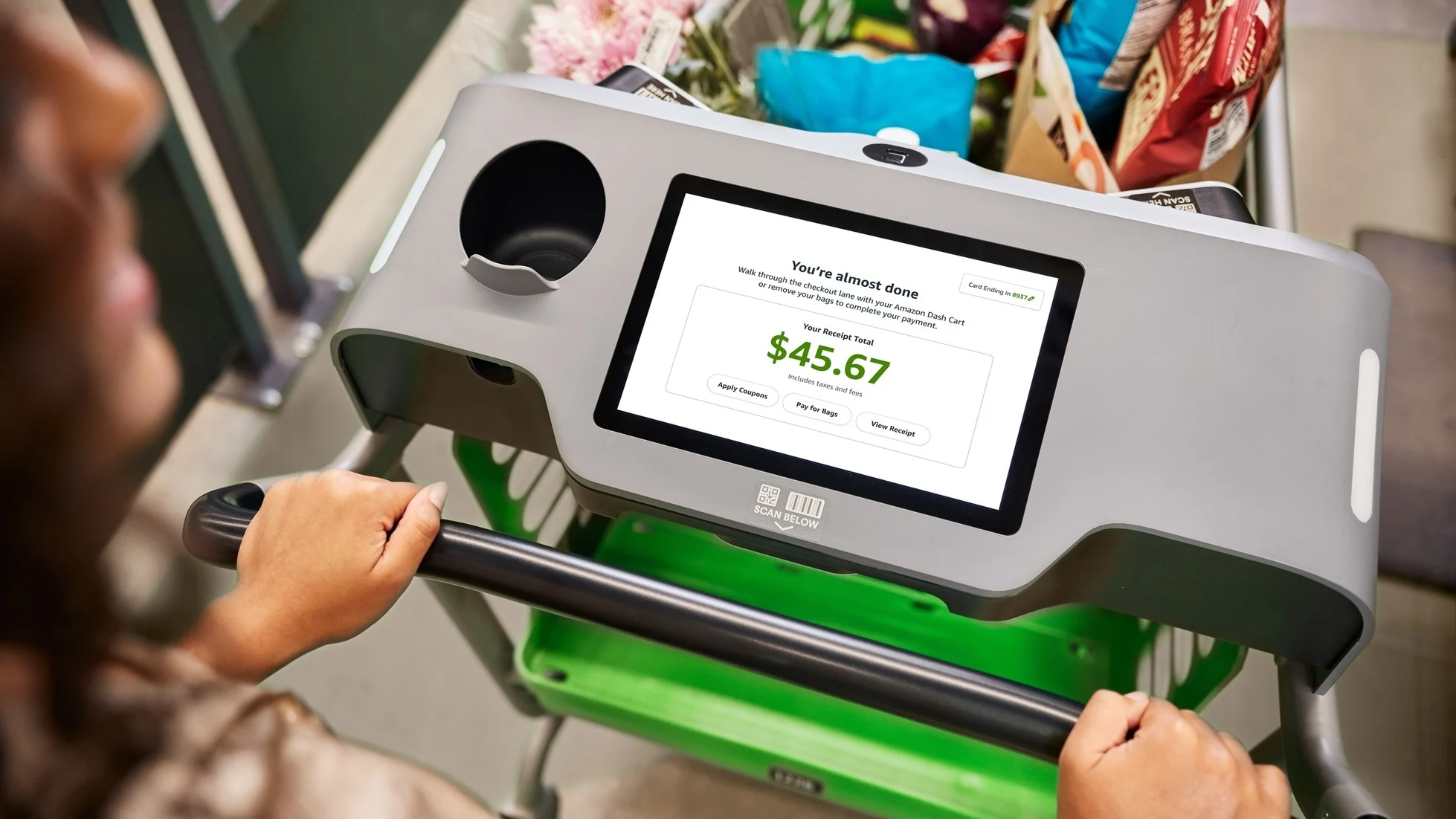Imagine pushing a grocery cart that knows what you’re buying, keeps track of your spending, and lets you walk out the door—no checkout, no waiting, no hassle. This isn’t science fiction. In 2025, cashier-less stores and smart carts are transforming retail across the world. Behind this shift are advancements in edge AI, computer vision, sensors, and data analytics—all engineered to enhance convenience, efficiency, and customer satisfaction. Explore how cashier-less stores, AI smart carts like Caper, and in-store checkout tech are revolutionizing retail in 2025—with real numbers, shopper insights, and procurement leader Mattias Knutsson’s strategic take.
Cashier-Free Stores: The Walk-Out Revolution
Cashier-free stores use a blend of AI-driven technologies:
- Computer vision and sensor fusion detect items picked or returned.
- Smart shelving tracks weight changes.
- RFID and mobile apps integrate user data and payments.
When shoppers leave, the system automatically charges their account and emails a receipt. Amazon Go pioneered this format, but it’s spreading fast.
Expansion & Global Adoption
- Amazon Fresh now operates walk-out stores in major U.S. cities and airports.
- Tesco GetGo in the UK and Carrefour Flash in France bring the model to Europe.
- Carrefour City+ launched Dubai’s first fully automated convenience store.
- 7-Eleven and Lawson in Japan now feature RFID and facial recognition payment trials.
According to Juniper Research, over 12,000 cashierless stores will be operating globally by the end of 2025.
Challenges & Realities
While promising, some concerns remain:
- High infrastructure cost for smaller retailers.
- Accuracy issues in tracking items when shoppers block cameras.
- Privacy concerns from facial recognition and behavioral tracking.
Despite these, customer satisfaction ratings in walk-out stores are high—with 88% of users citing time savings as a key benefit.
AI Smart Carts: Retail Tech That Moves With You
Caper AI Carts by Instacart
These carts recognize products as they’re placed inside using computer vision and barcode scanning. They:
- Provide real-time total cost, show discounts.
- Offer interactive screens with recipes, aisle maps, and coupon offers.
- Enable self-checkout on the cart or via mobile app.
Retailer Deployments
- Bowman’s Market (Utah) increased basket size by 18% after adopting Caper carts.
- AWG expanded deployment to over 2,300 stores in 2024.
- Coles Australia piloted Caper carts in 2025—first in the Asia-Pacific region.
Consumer Impact
A Caper cart user in a pilot store reported saving $10 during one trip due to automated coupons and discount matching.
- 83% of surveyed customers said the carts improved budgeting.
- Families appreciated the gamified elements, especially coupon wheels and treasure hunt games.
In-Store AI Checkout Systems
Beyond walk-out models and smart carts, many retailers are upgrading traditional self-checkouts:
- Sam’s Club uses AI to validate receipts, cutting exit times by 23%.
- Walmart and Target are testing AI monitoring to reduce shrink and fraud.
- Shelf scanning robots and fixed cameras help monitor stock levels and display compliance.
Retailers using in-store AI systems report:
- Up to 30% reduction in labor costs.
- 20-25% lower product loss due to improved theft detection.
- 2-3x more customer data points collected per transaction.
Shopper Experience & Feedback
Why Shoppers Love It
- No more queues or scanning delays.
- Easy access to personalized deals.
- Better control over spending with in-cart budgets.
What Needs Improvement
- Tech hiccups: occasional misreads or lag.
- Accessibility concerns for less tech-savvy users.
- Price: Smaller stores worry about high upfront investment.
Despite this, over 71% of Gen Z and Millennial shoppers say they prefer AI-enhanced shopping when available.
Market Outlook & Growth Projections
- The AI smart carts market is expected to hit $2.25 billion in 2025, up from $1.85 billion in 2024.
- Cashierless store tech is forecast to grow at a 24% CAGR through 2030, reaching $10.2 billion globally.
Retailers see high ROI from tech-enabled stores due to:
- Reduced labor overhead.
- More accurate inventory and supply chain data.
- Enhanced advertising opportunities and shopper engagement.
The Human Element: Ethical Tech and Future Jobs
AI checkout tech raises important questions:
- Will automation eliminate cashier jobs? In part, yes. But many will transition to customer service or tech support roles.
- How do we protect shopper data and privacy? Regulation and transparency are critical.
- How do we make it inclusive? UX and hardware must accommodate all users, including the elderly and disabled.
These shifts must be managed with empathy and foresight.
Conclusion:
Retail is evolving, and the changes are not only technological but cultural. As AI-powered shopping becomes the norm, we must ensure it remains human-centric.
Retailers and suppliers should focus on:
- Transparency in data collection.
- Affordability and accessibility.
- Creating seamless but meaningful shopper experiences.
Mattias Knutsson, a global procurement strategist, shares:
“The evolution of smart carts and zero-checkout stores reflects more than innovation. It reflects the convergence of consumer trust, efficiency, and sustainability. Procurement leaders must prepare for a future shaped by technology-enabled transparency.”
As we cross the threshold into smarter retail, we must bring empathy, ethics, and practicality with us—ensuring that shopping is not just fast, but fair.
More related posts:





